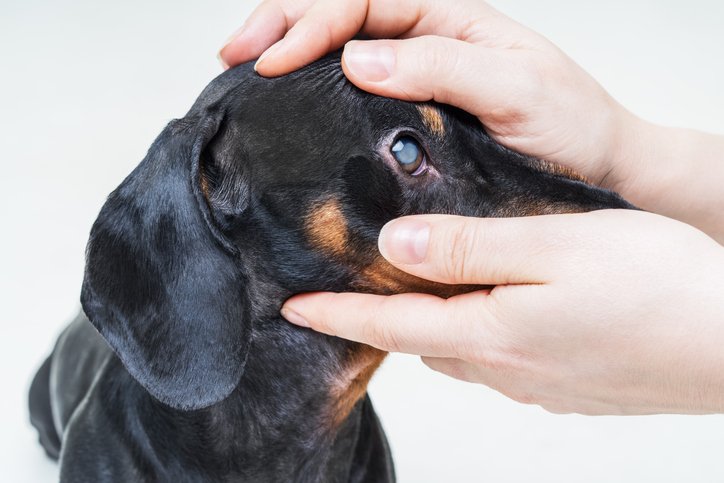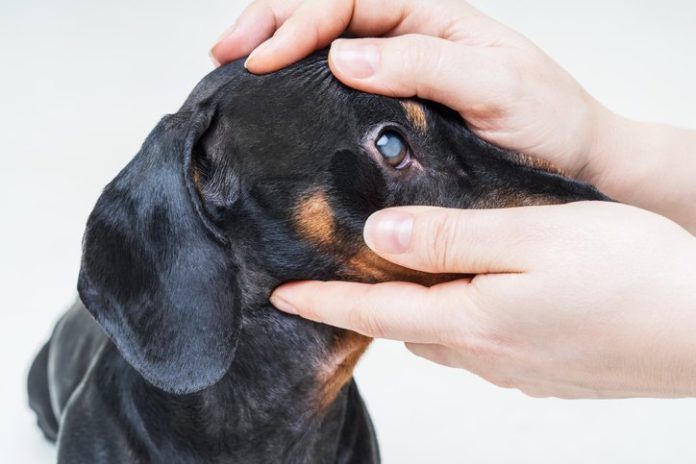If your once-athletic dog can no longer catch a tossed treat, or your senior pauses before descending a flight of stairs, there’s a chance that his vision may be cloudy because of cataracts in one or both eyes.

Photo Getty Images
Cataracts are opacities that develop within the normally clear lens, the structure inside the eye that is responsible for focusing. In dogs with cataracts, a haziness or cloudiness of the lens may be evident in the later stages of the condition.
If untreated, cataracts can eventually cause blindness. Over time, they can also lead to inflammation inside the eye (uveitis) and glaucoma, a painful disease associated with high pressure inside the eye. Cataracts in dogs can develop at any age. They can progress slowly or come on very quickly, and they may grow inside one or both lenses.
Aging can contribute to the development of cataracts in senior or geriatric dogs. The leading causes of cataracts in dogs, however, are hereditary predisposition and diabetes. For diabetic dogs, high blood sugar levels alter the metabolism of the cells in the lens and can cause the rapid onset of cataracts.
Other causes of cataracts include inflammatory diseases of the eye like uveitis, trauma to the eye (caused by a blunt or sharp object) as well as exposure to toxic substances, radiation or electric shock. And sometimes the cause of the cataract is not known.
Owners should be aware of behaviors like: bumping into furniture, such as a recliner or sofa that has not been recently moved, hesitating when using stairs (especially when descending), or seeming to forget the location of food and water bowls.
Cataracts in dogs may not cause obvious vision impairment until they are advanced, which is why it’s so important that pets receive thorough physical examinations at least once a year.
Cataract Treatment for Dogs
Cataracts in dogs are treated surgically. The best surgical candidates are dogs in good health with no evidence of any inflammatory conditions or diabetes. Before surgery, additional tests will be conducted to make sure the retina is healthy and functioning properly. According to clinical studies, the surgical success rate in dogs is between 90 and 95 percent.
Vision generally shows improvement within a few days with full recovery typically requiring six weeks. Immediately after surgery, patients are fitted with a special cone-shaped collar to prevent pawing or rubbing at the eye or eyes. Anti-inflammatory and antibiotic medications are commonly prescribed after surgery.
If a dog is not a good candidate for surgery, the long-term plan calls for more regular veterinary examinations and assessments at least once or twice a year by a veterinary ophthalmologist to monitor the cataract’s progress and check for the presence of any other ocular condition.
“Sight is important to all dogs, although dogs that lose their vision can still enjoy good quality of life,” says Dr. Pumphrey.






I was told my 9 year old female shih tzu has cataracts. One or both eyes, not sure.
She does not have diabetes and in good health.
How much would cataract surgery cost in Canada or U.S.
Thank you